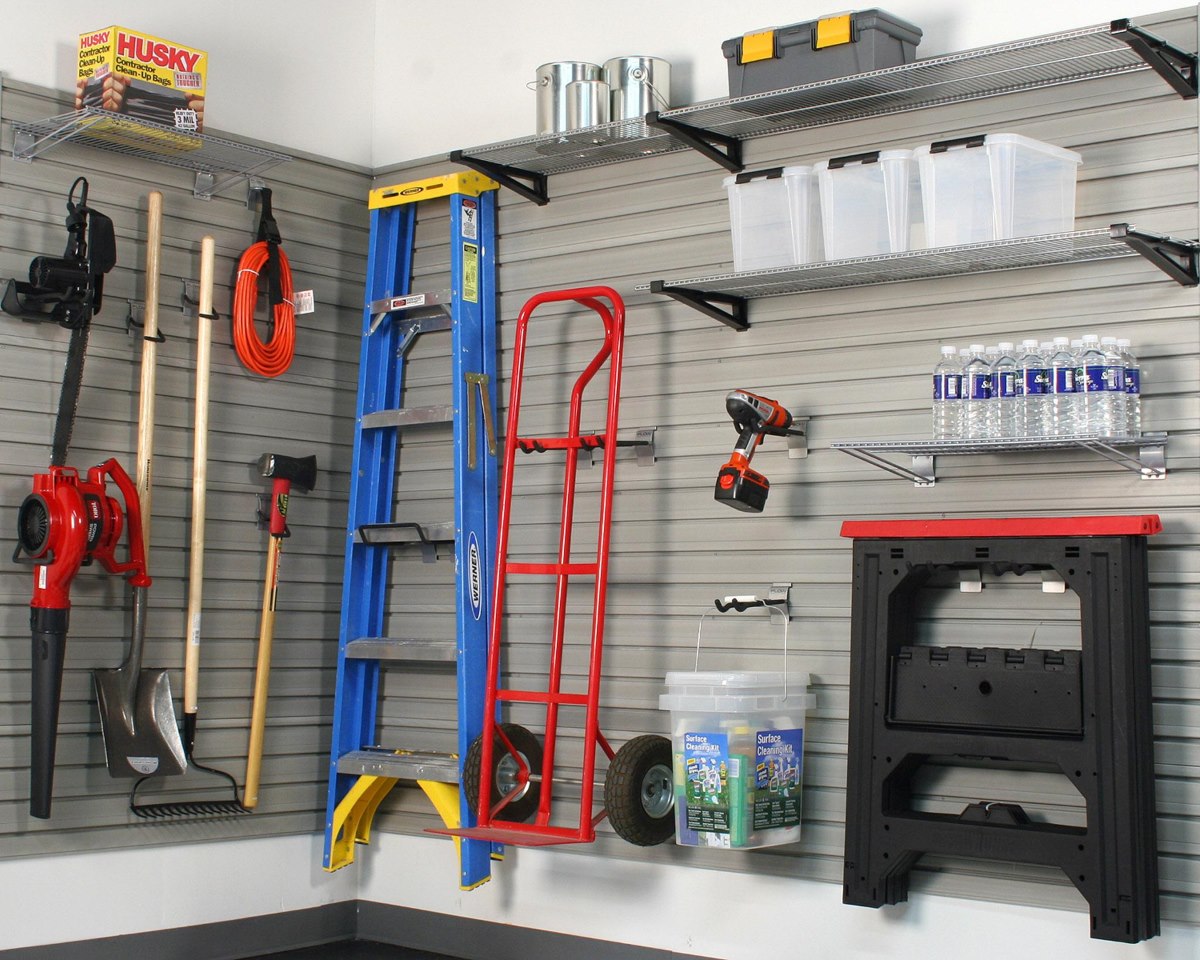

Articles
How To Store A Ladder
Modified: October 20, 2024
Learn the best practices for storing a ladder with our informative articles. Keep your ladder safe and organized for easy access.
(Many of the links in this article redirect to a specific reviewed product. Your purchase of these products through affiliate links helps to generate commission for Storables.com, at no extra cost. Learn more)
Introduction
A ladder is a valuable tool that helps us reach heights and complete various tasks, whether it’s fixing a light bulb, painting a room, or accessing high shelves. When you have a ladder, it’s important to store it properly to ensure its longevity and maintain its usability for future needs.
In this article, we will guide you through the step-by-step process of storing a ladder effectively. From choosing a suitable location to properly cleaning and maintaining the ladder, we will cover all the essential aspects to help you keep your ladder in optimal condition.
Whether you have a step ladder, extension ladder, or any other type of ladder, these storage tips will apply to all. So let’s dive in and learn how to store a ladder in a way that keeps it safe, protected, and ready for your next project!
Key Takeaways:
- Proper ladder storage involves choosing a suitable location, cleaning, checking for damages, and selecting the right storage method. Regular maintenance ensures longevity and safe operation, making your ladder a reliable tool for various tasks.
- By following the step-by-step process of storing a ladder effectively, you can ensure its safety, protection, and readiness for future projects. Proper storage and regular maintenance are key to extending the lifespan of your ladder and ensuring your safety during future use.
Read more: How To Store Ladders Outside
Step 1: Choose a Suitable Location
Before you start storing your ladder, it’s crucial to find an appropriate location in your home or garage. Here are a few factors to consider:
- Accessibility: Choose a location that is easily accessible so you can retrieve the ladder quickly when needed. Avoid storing it in a spot that is obstructed or difficult to reach.
- Climate control: Ideally, store the ladder in a climate-controlled area to protect it from extreme temperatures and humidity. This helps prevent the ladder from warping or deteriorating over time.
- Wall-mounted options: If you have limited space, consider installing wall hooks or brackets to hang the ladder vertically. This not only saves space but also keeps the ladder off the ground and prevents potential damage.
- Floor space: If wall mounting is not an option, make sure you allocate sufficient floor space for the ladder to avoid it leaning against other items or falling over.
- Visibility: Select a location where the ladder is easily visible. This will serve as a reminder to inspect and maintain it regularly, ensuring its safety and usability.
Take some time to evaluate different areas in your home or garage that meet these criteria. Once you have chosen a suitable location, you can move on to the next step of preparing your ladder for storage.
Step 2: Clean the Ladder
Before storing your ladder, it’s essential to give it a thorough cleaning to remove any dirt, debris, or grease that may have accumulated.
Here’s how you can clean your ladder effectively:
- Inspect for debris: Begin by visually inspecting the ladder for any dirt, dust, or cobwebs. Use a broom or a brush to remove loose particles.
- Use a mild detergent: Fill a bucket with warm water and add a mild detergent or dish soap. Dip a sponge or a soft cloth into the soapy water and gently scrub the ladder, paying attention to any heavily soiled areas.
- Remove grease or oil: If there are any greasy or oily spots on the ladder, use a degreaser or a solvent to break down the residue. Apply the degreaser to a clean cloth and wipe the affected areas until the grease is removed.
- Rinse: After cleaning, rinse the ladder thoroughly with clean water to remove any soap residue. Ensure that all sides and rungs of the ladder are rinsed properly.
- Dry the ladder: Use a clean towel or allow the ladder to air dry completely before storing it. Make sure there is no moisture left on the ladder, as it can lead to rust or corrosion.
By cleaning your ladder before storage, you not only remove dirt and grime but also prevent any build-up that may affect its functionality over time. Plus, a clean ladder is much more pleasant to work with when you need it next!
Step 3: Check for Any Damages
Before storing your ladder, it’s important to inspect it for any damages or wear and tear. Identifying and addressing any issues now will ensure that your ladder remains safe and functional for future use.
Follow these steps to check for damages:
- Inspect the rungs: Start by closely examining each rung of the ladder. Look for any cracks, splintering, or signs of excessive wear. If you notice any damaged rungs, it’s advisable to have them repaired or replaced before storing the ladder.
- Check for bent or damaged rails: Carefully inspect the rails or sides of the ladder. Look for any bends, dents, or other forms of damage that may compromise the ladder’s structural integrity. If you find any issues, consult a professional or the ladder manufacturer for guidance on whether repairs are necessary.
- Inspect the locking mechanisms: For extension ladders or ladders with adjustable heights, check the locking mechanisms. Ensure that they are functioning correctly and securely. If any locks are loose or not working properly, have them repaired or replaced.
- Look for loose or missing screws: Examine all the screws, bolts, and other hardware on the ladder. Tighten any loose screws, and if you find any missing, replace them with suitable replacements.
- Check for stability: Test the ladder’s stability by giving it a gentle shake. If you notice excessive wobbling or instability, it may indicate a structural issue. In such cases, refrain from using the ladder until it is properly repaired.
By conducting a thorough check for damages, you can address any issues promptly and ensure that your ladder is stored in proper working condition. Regular inspections and maintenance are key to extending the lifespan of your ladder and ensuring your safety during future use.
Step 4: Prepare the Ladder for Storage
Once you have cleaned and checked your ladder for any damages, it’s time to prepare it for storage. Properly preparing your ladder will help prevent any potential damage while it’s not in use.
Here’s how you can prepare your ladder for storage:
- Remove any accessories: If your ladder has any attachments or accessories, such as tool trays or paint holders, remove them before storing the ladder. This will prevent them from getting damaged or stuck during storage.
- Secure loose ends: If your ladder has any loose straps, ropes, or cables, secure them properly to avoid tangles and prevent tripping hazards.
- Consider using padding: To provide additional protection to your ladder, you can use foam padding or bubble wrap to cover the areas that may come in contact with other objects during storage. This will help prevent scratches or dents.
- Fold or collapse the ladder: Depending on the type of ladder you have, follow the manufacturer’s instructions to fold or collapse it to a compact size. This will save space and make it easier to store or transport.
- Secure with straps or bungee cords: Use straps or bungee cords to secure the ladder in its folded or collapsed position. This will prevent it from accidentally opening or shifting during storage.
By taking these steps to prepare your ladder for storage, you can ensure that it remains in good condition and is ready for use whenever you need it again. Remember to follow the ladder manufacturer’s guidelines for specific instructions on preparing and storing your particular ladder model.
Store your ladder in a dry, well-ventilated area to prevent rust and corrosion. Hang it horizontally or vertically to save space and avoid any potential damage.
Read more: How To Store A Ladder In A Garage
Step 5: Select the Right Storage Method
Choosing the right storage method for your ladder is crucial to ensure its safety and longevity. There are various options available depending on your space and requirements.
Consider the following storage methods:
- Vertical storage: If you have limited floor space, vertical storage is an excellent option. You can use wall-mounted hooks or brackets to hang the ladder vertically against a wall. Make sure the hooks or brackets are securely installed and can support the weight of the ladder.
- Horizontal storage: If you have ample floor space, you can store the ladder horizontally. Place it on a sturdy rack or a designated area in your garage or shed. Ensure that the ladder is secure and will not tip over.
- Ceiling storage: If you have high ceilings, you can utilize overhead storage systems designed specifically for ladders. These systems typically involve pulleys or hoists to lift and suspend the ladder from the ceiling. Ensure that the system is properly installed and can safely support the weight of the ladder.
- Ladder storage rack: Alternatively, you can invest in a ladder storage rack, which is specifically designed to hold ladders. These racks typically have adjustable arms or hooks that can accommodate various ladder sizes. Place the ladder securely on the rack and ensure that it is stable before leaving it unattended.
- Protective covers: Regardless of the storage method you choose, consider using a protective cover to shield the ladder from dust, moisture, and other potential damage. This is particularly important if you are storing the ladder in an outdoor area or a less climate-controlled environment.
Whichever storage method you opt for, make sure it provides a safe and secure environment for your ladder. It should protect the ladder from any potential hazards, such as falling objects, excessive humidity, or accidental damage.
Ultimately, selecting the right storage method will help extend the lifespan of your ladder and ensure that it remains in optimal condition for future use.
Step 6: Store the Ladder Safely
After choosing the right storage method, it’s important to ensure that you store your ladder safely to prevent any accidents or damage during its time in storage.
Here are some safety tips to follow when storing your ladder:
- Stability: Ensure that the ladder is securely positioned or mounted in its storage location. Double-check that it is stable and not at risk of falling over or being knocked down.
- Clear the area: Keep the area around the ladder clear of any clutter or obstacles. This will prevent accidental tripping or potentially damaging the ladder when retrieving it for use.
- Childproofing: If there are children around, take extra precautions to childproof the ladder storage area. Restrict access to the ladder or use safety gates to prevent children from climbing or playing on it.
- Labeling: If you have multiple ladders or storage areas, label or mark each ladder to easily identify its purpose or location. This will save time and effort when you need to find a specific ladder.
- Regular inspections: While in storage, periodically check on the ladder to ensure that it remains in good condition. Look for any signs of damage, rust, or pests. A quick inspection will help you identify any issues early and take appropriate action.
By following these safety guidelines, you can minimize the risk of accidents and maintain the quality of your ladder during its time in storage. Safety should always be a priority, even when the ladder is not in use.
Step 7: Regular Maintenance Tips
To ensure the longevity and safe operation of your ladder, regular maintenance is essential. Here are some maintenance tips to keep your ladder in optimal condition:
- Inspect before each use: Before using the ladder, give it a quick visual inspection. Look for any signs of damage, such as cracks, loose parts, or bent rungs. If you notice any issues, refrain from using the ladder until it is properly repaired.
- Keep it clean: Periodically clean your ladder to remove dirt, dust, and debris. Use a mild detergent and water to gently scrub the ladder, and ensure that it is completely dry before storing it again.
- Check the stability: Test the ladder’s stability periodically by giving it a gentle shake. If you notice any wobbling or instability, have it checked and repaired by a professional before using it again.
- Lubricate moving parts: If your ladder has any moving parts, such as hinges or locking mechanisms, apply lubricant to keep them functioning smoothly. This will prevent stiffness or sticking, ensuring easy operation.
- Store it properly: Follow the steps outlined in the previous sections to store your ladder correctly. Choose an appropriate storage method and create a designated space to keep your ladder safe and protected.
- Handle with care: When handling the ladder, be mindful of its weight and length. Avoid dropping or throwing the ladder, as it can cause damage to both the ladder and its surroundings.
- Replace worn-out parts: Over time, certain parts of your ladder may become worn or damaged. It’s important to replace these parts promptly to maintain the ladder’s performance and safety. Consult the ladder manufacturer or a professional for guidance on obtaining and installing replacement parts.
- Follow weight capacity guidelines: Each ladder has a maximum weight capacity specified by the manufacturer. Ensure that you do not exceed this limit to prevent accidents and damage to the ladder.
By following these maintenance tips and incorporating them into your ladder care routine, you can ensure the longevity and safe operation of your ladder for years to come.
Conclusion
Storing a ladder properly is essential to maintain its functionality, safety, and longevity. By following the step-by-step process outlined in this article, you can ensure that your ladder remains in optimal condition for future use.
Remember to choose a suitable location for storing your ladder, taking into consideration factors such as accessibility, climate control, and visibility. Clean the ladder thoroughly and check for any damages or wear and tear before preparing it for storage. Select the right storage method that suits your space and requirements, whether it’s vertical, horizontal, ceiling storage, or a ladder storage rack. Ensure that the ladder is stored securely and safely to prevent accidents and damage.
In addition to proper storage, regular maintenance is crucial for the upkeep of your ladder. Inspect the ladder before each use, keep it clean, lubricate moving parts, and promptly replace any worn-out or damaged components. Follow weight capacity guidelines and handle the ladder with care to prevent accidents.
By implementing these storage and maintenance tips, you can extend the lifespan of your ladder and ensure that it remains a reliable tool for all your height-related tasks. Properly stored and well-maintained, your ladder will be ready whenever you need it, providing you with a safe and sturdy platform to reach new heights.
Frequently Asked Questions about How To Store A Ladder
Was this page helpful?
At Storables.com, we guarantee accurate and reliable information. Our content, validated by Expert Board Contributors, is crafted following stringent Editorial Policies. We're committed to providing you with well-researched, expert-backed insights for all your informational needs.

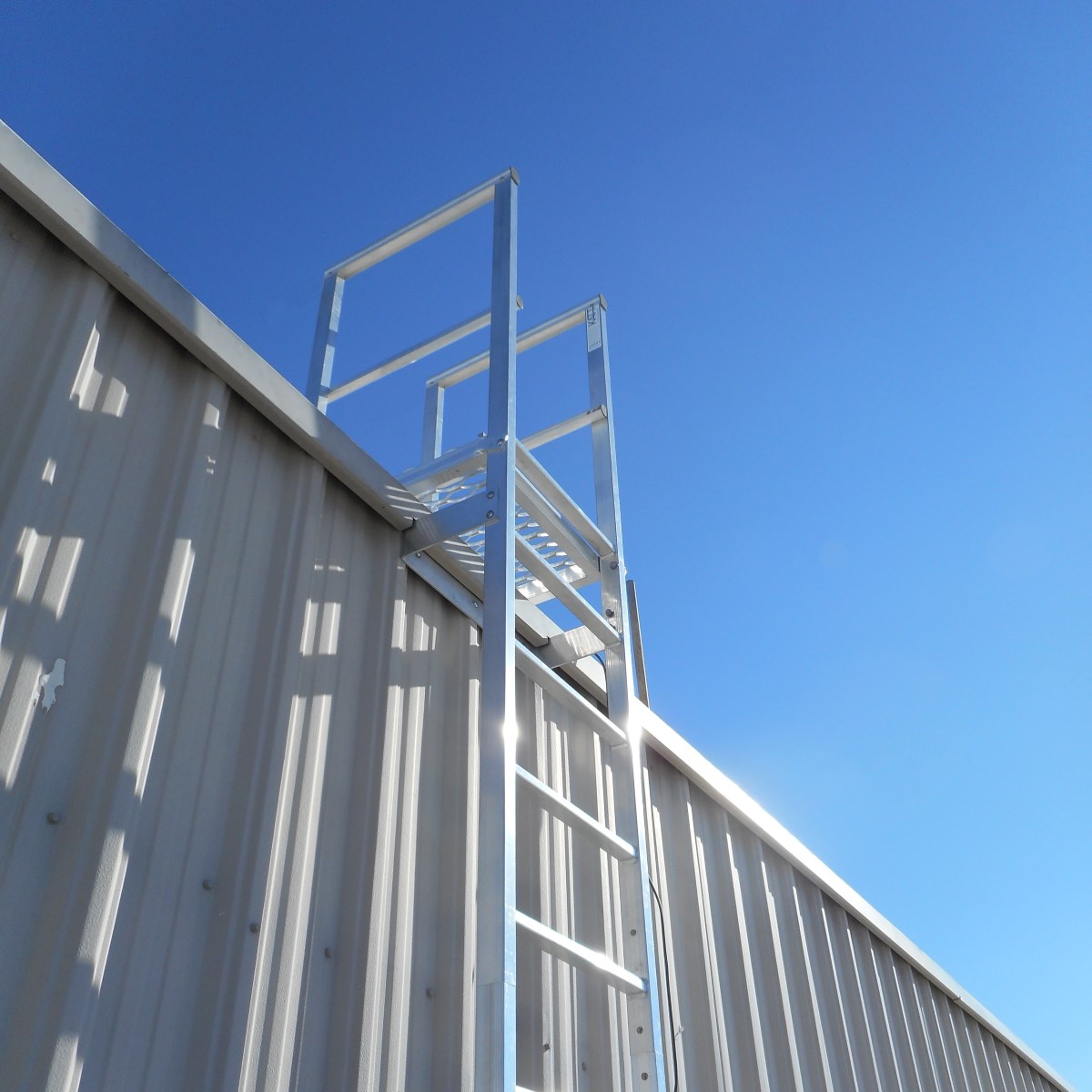


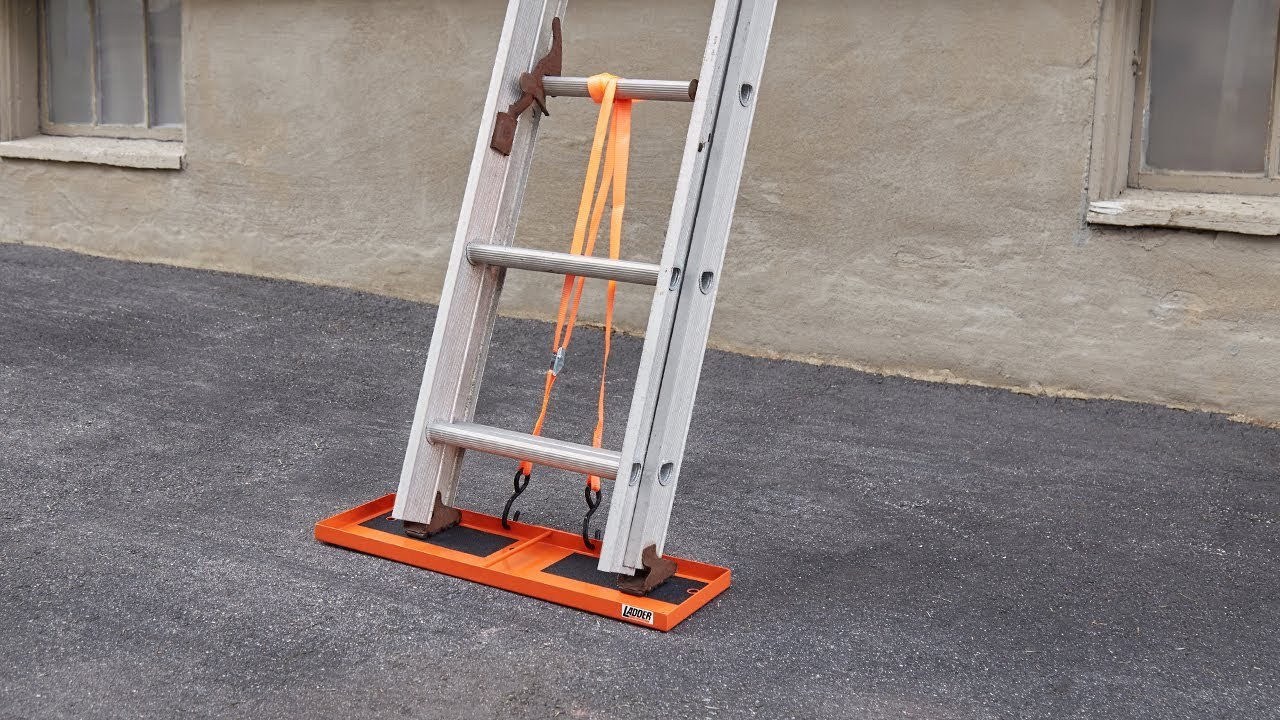
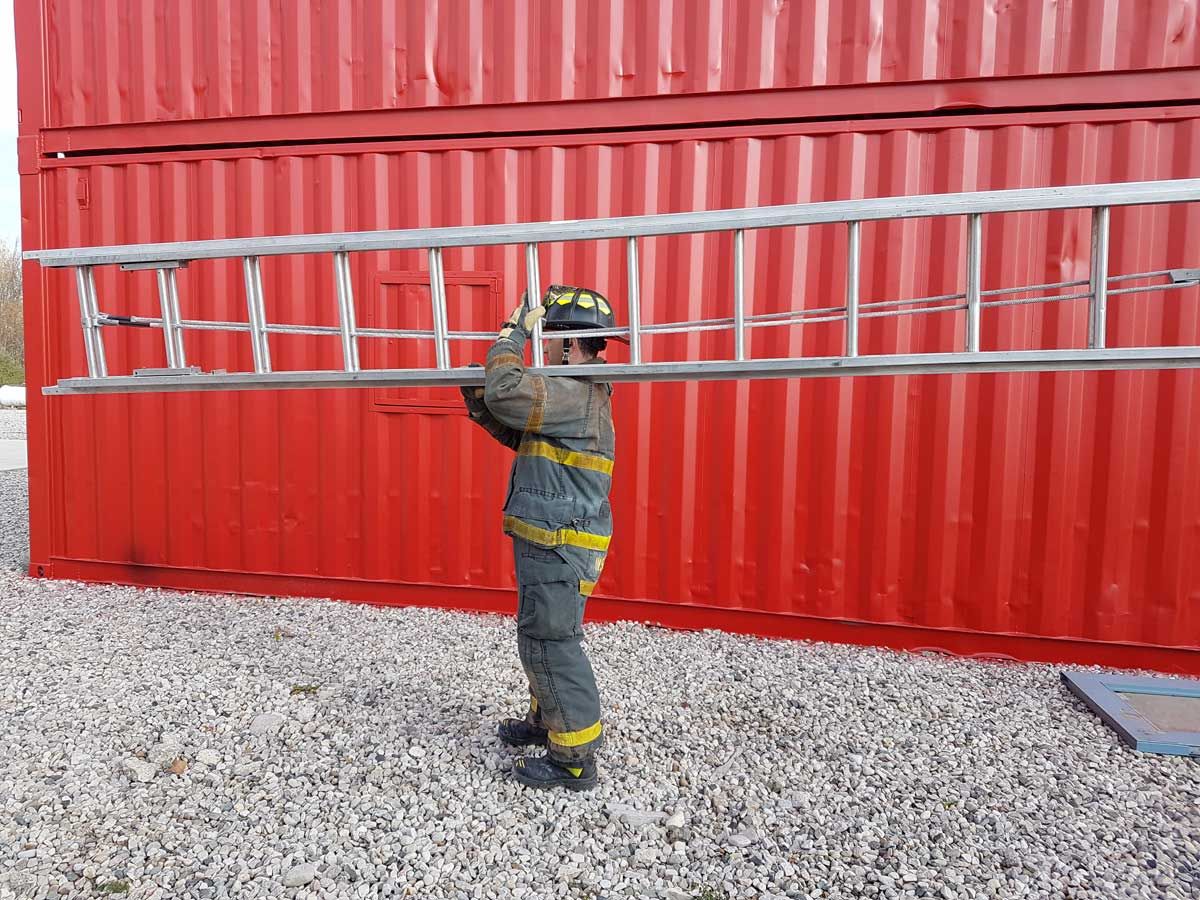
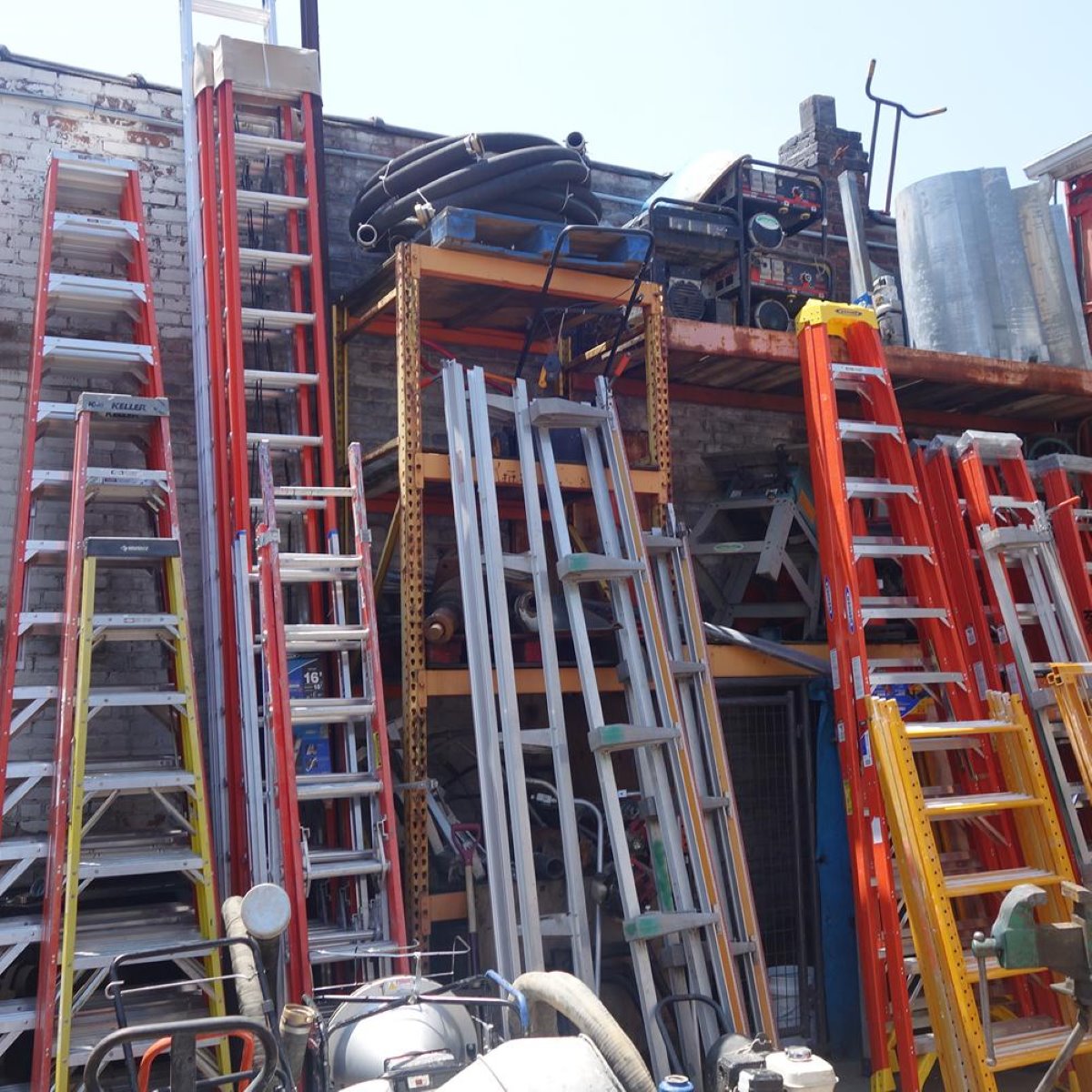


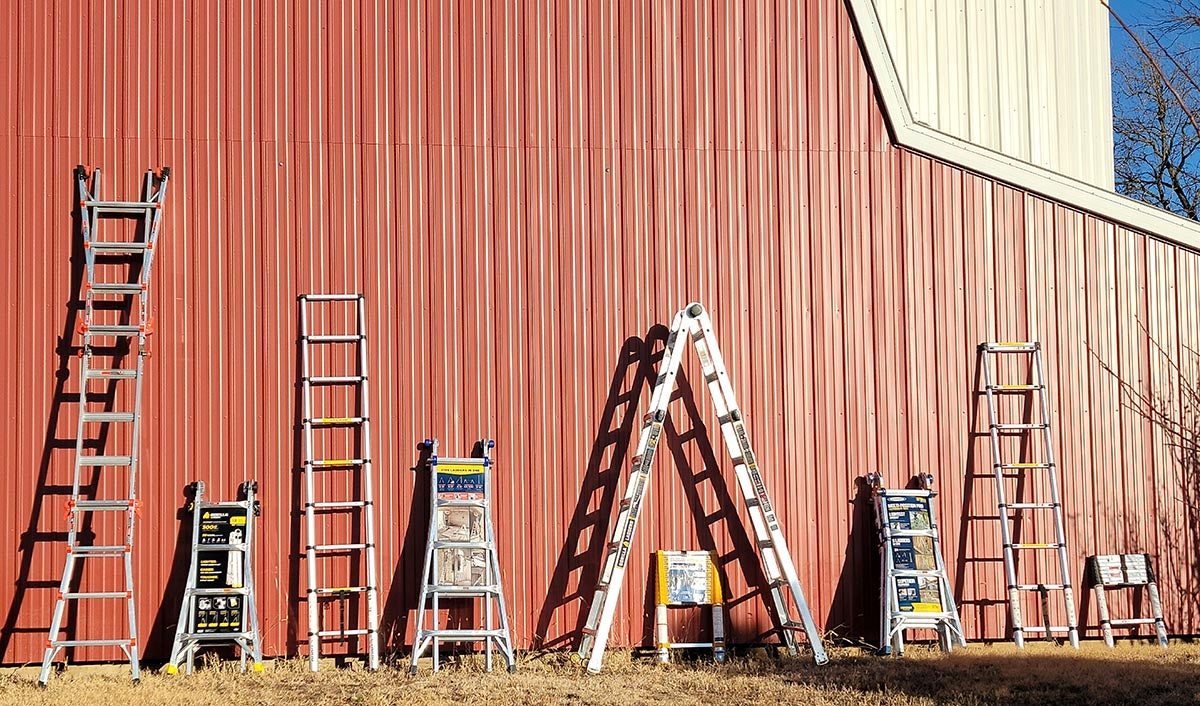
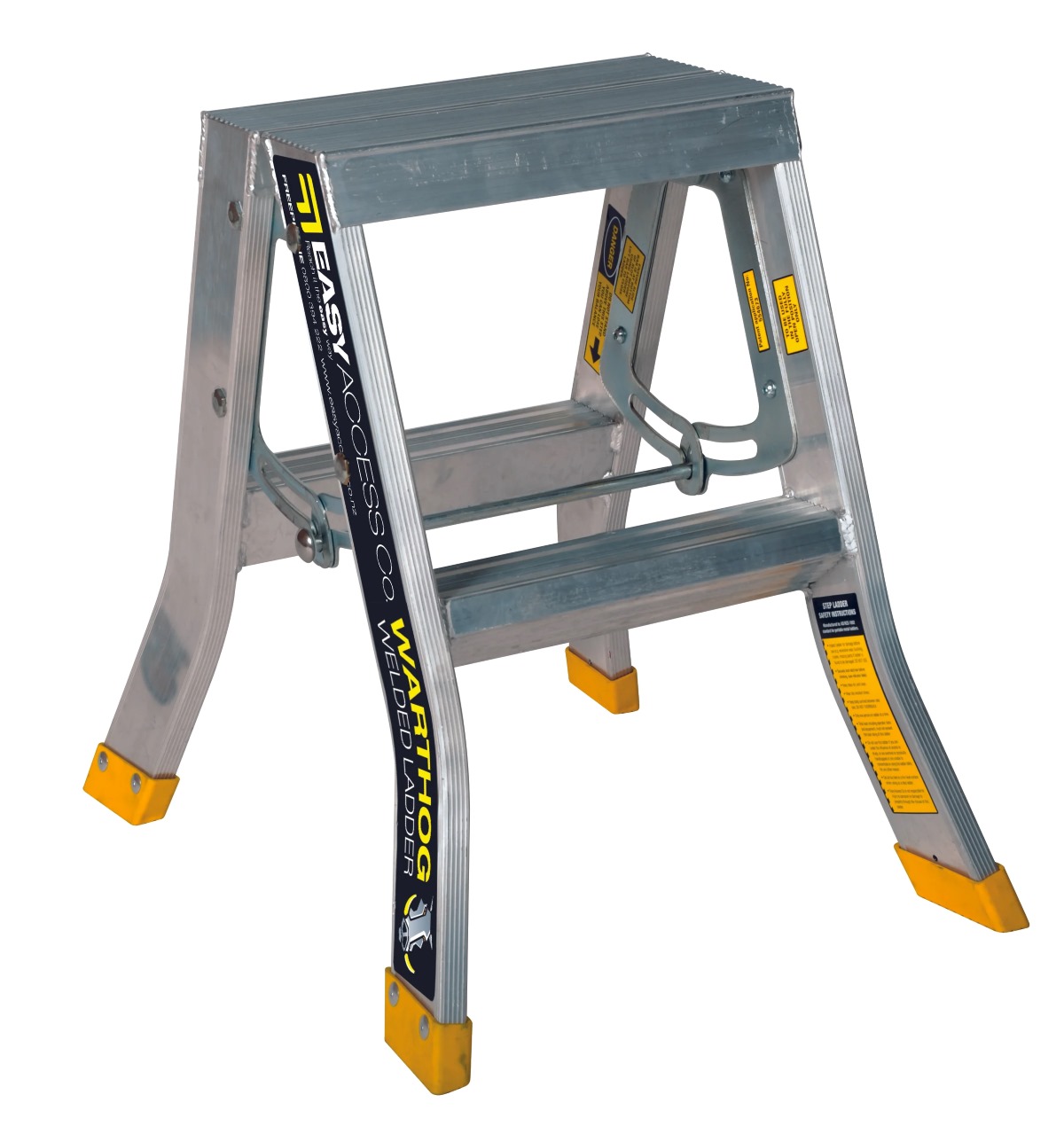
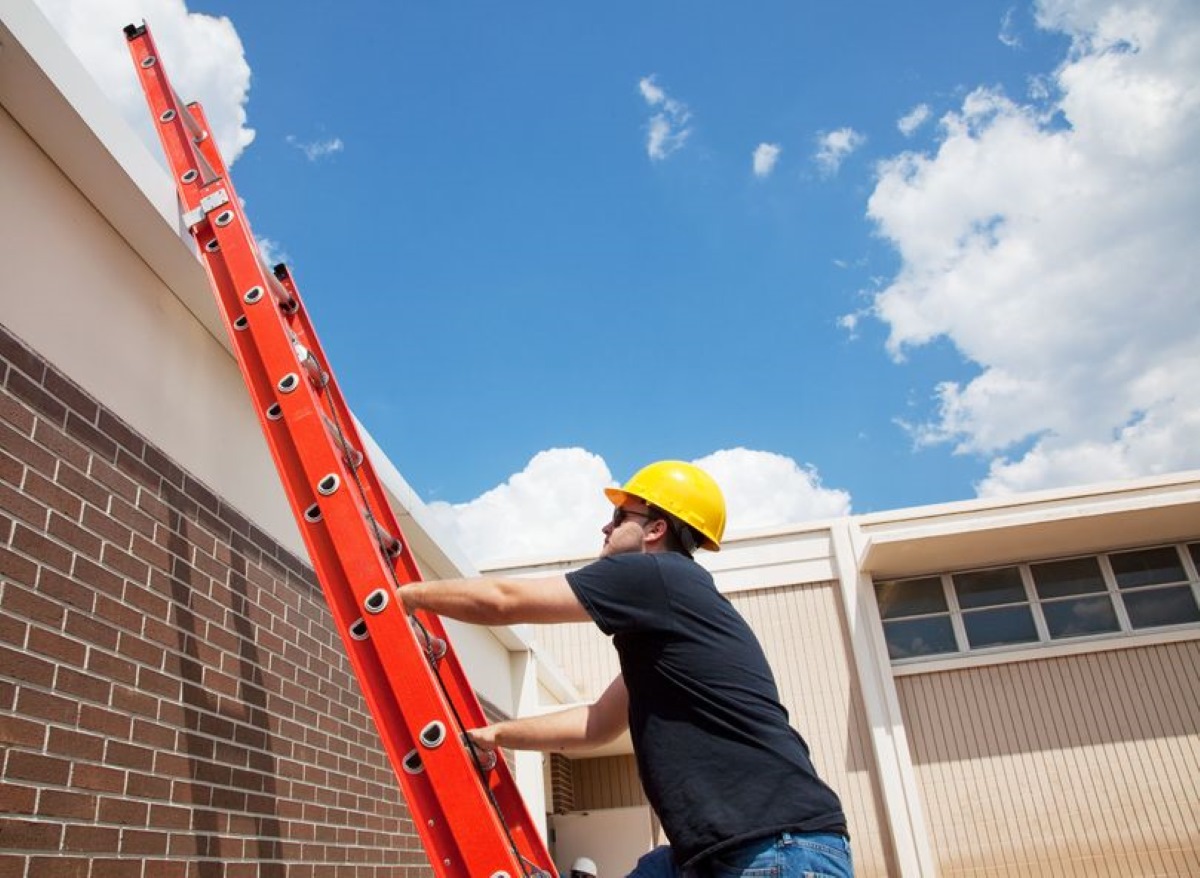

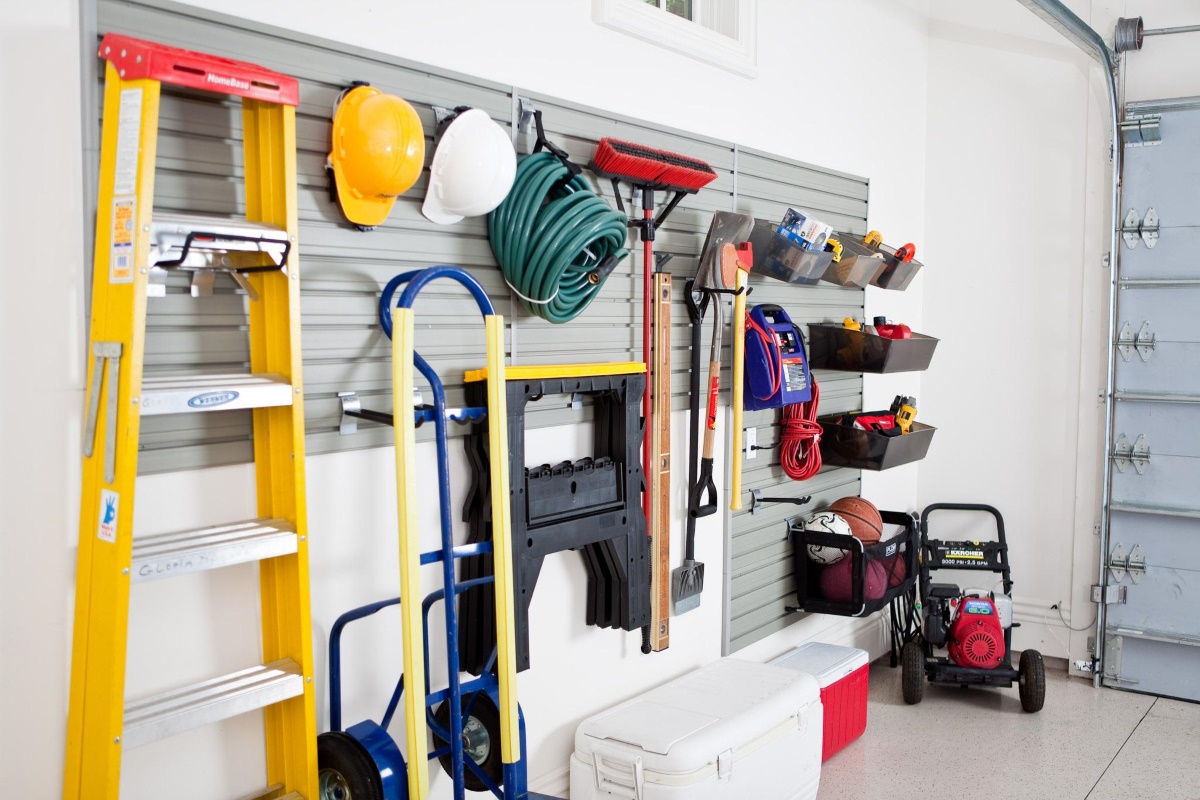

0 thoughts on “How To Store A Ladder”